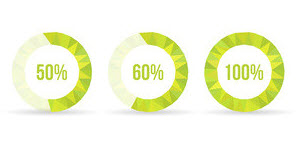
End-users not only expect digital information to be delivered seamlessly across devices – they also expect almost instantaneous results. What does this mean for website owners? It means that sites should load in 2-3 seconds. If not, users not only move on to the next site, but search engines like Google also penalize sites that don’t optimize the user experience. The first step in finding out if your site loads slowly is to run a test. If you find that your site is taking longer to load than it should, id areas where improvements can be made, then start optimizing performance. Common loading issues include, but are not limited to the following:
- Lack of a CDN (content delivery network) – A CDN provides faster and more efficient delivery of content, including media, by leveraging servers that are located in close geographic proximity to end-users. Though a CDN can be a costly investment, it’s a smart move for enterprise sites with high levels of traffic.
- No keep-alives. By default, websites typically use an open connection to return information to users more quickly when it’s requested multiple times. Double check to make sure this feature in enabled.
- Slow hosting. When all else fails, check with your hosting provider to ensure the error is not with them. Poor hosting providers could have thousands of sites on one server, causing super slow load time. Choose a reputable provider such as GoDaddy or Hostmonster, who specialize in hosting and have reputable support and customer service.
- Image overload. One of the age old reasons why websites load slowly is due to large or improperly formatted images. When possible, try to crop out excess white space and save in low-res PNG or JPG format.
- Flash. While many sites are shying away from Flash in favor of HTML5 and other cross-device friendly media formats, a Flash intro can sufficiently slow down your site. What visitors really want is fast information – not a fancy intro.
- Too many re-directs. A re-direct is essentially another step in getting users to the information they need. While re-directs can be used as a temporary band-aid, they should be used sparingly.
While numerous things can effect a site’s load time, the implications can be the difference between keeping and losing a customer. The good news? Most of the above fixes are quick and can provide instant results.
 End-users not only expect digital information to be delivered seamlessly across devices – they also expect almost instantaneous results. What does this mean for website owners? It means that sites should load in 2-3 seconds. If not, users not only move on to the next site, but search engines like Google also penalize sites that don’t optimize the user experience. The first step in finding out if your site loads slowly is to run a test. If you find that your site is taking longer to load than it should, id areas where improvements can be made, then start optimizing performance. Common loading issues include, but are not limited to the following:
End-users not only expect digital information to be delivered seamlessly across devices – they also expect almost instantaneous results. What does this mean for website owners? It means that sites should load in 2-3 seconds. If not, users not only move on to the next site, but search engines like Google also penalize sites that don’t optimize the user experience. The first step in finding out if your site loads slowly is to run a test. If you find that your site is taking longer to load than it should, id areas where improvements can be made, then start optimizing performance. Common loading issues include, but are not limited to the following: